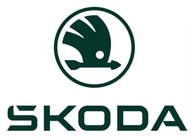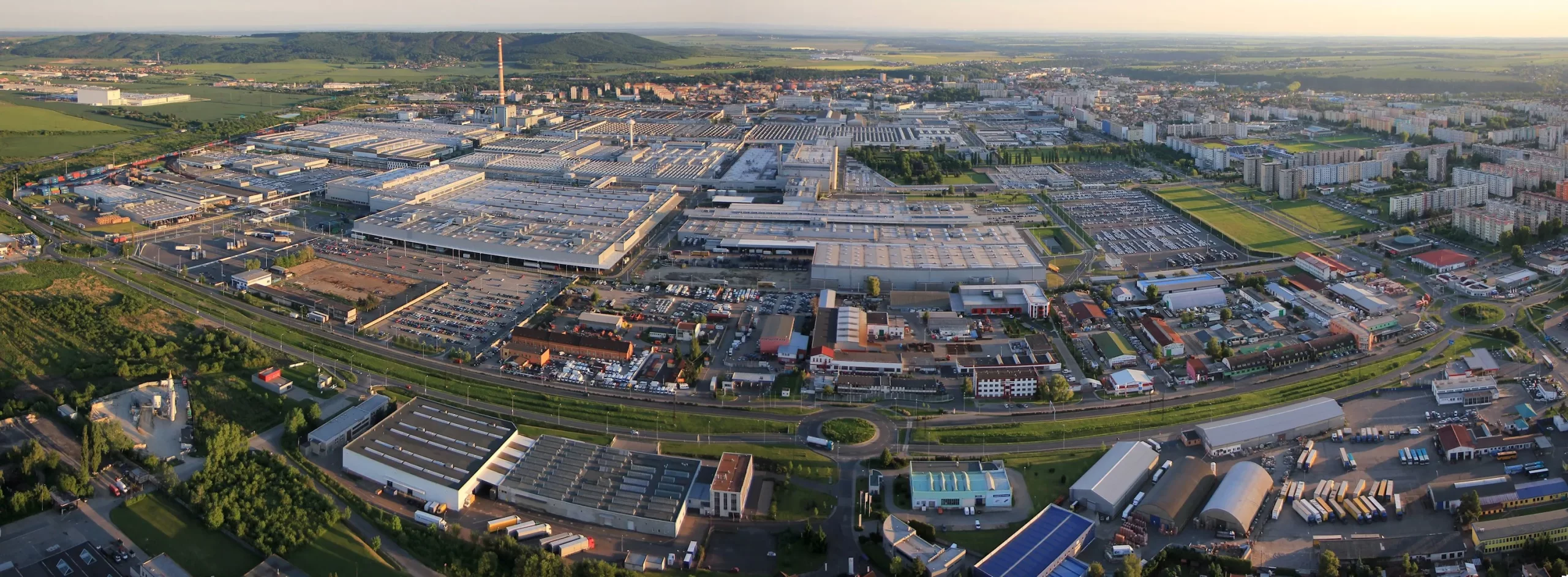
ŠKODA Auto delivered over 731,000 vehicles to customers around the world in 2022. Currently ŠKODA offers its customers eleven passenger-car series: the Fabia, Scala, Octavia and Superb as well as the Kamiq, Karoq, Kodiaq, Enyaq, Enyaq Coupé, Slavia and Kushaq. ŠKODA Auto is located in Mladá Boleslav, Czech Republic. They has belonged to Volkswagen Group since 1991. ŠKODA, in association with the Group, independently manufactures and develops vehicles, as well as components, engines and gear transmissions. Operates at three locations in the Czech Republic, produces in China, Russia, Slovakia and India mainly through Group partnerships, as well as in Ukraine and Kazakhstan through local partners. ŠKODA employs over 26,600 people globally and is active in more than 100 markets.
| Categories |
| Škoda Cars (Latest-2024) Škoda Archive 3 (2023-2015) Skoda Archive 2 (2014-2000) Skoda Archive 1 (1999-1905) Škoda News (2023-2015) |
| Websites |
| skoda-auto.com |
Škoda Auto
Škoda aims to be one of the five best-selling brands in Europe by 2030 with an attractive line-up in the entry-level segments and additional e-models and is emerging as the leading European brand in important growth markets such as India or North Africa. Škoda Auto officially launched its sales operations in Vietnam in September 2023. In addition, it had earlier taken over the strategic management of the Volkswagen Group’s Core volume brands for the entire ASEAN (Association of Southeast Asian Nations) region. Škoda independently manufactures and develops not only vehicles but also components such as MEB battery systems, engines and transmissions in association with the Group.
Škoda operates at three sites in the Czech Republic; has additional production capacity in China, Slovakia and India primarily through Group partnerships, as well as in Ukraine with a local partner. Škoda employs over 40,000 people globally and is active in over 100 markets.

Škoda Auto is fully leveraging the potential of its current target groups and attracting new customers to the Volkswagen Group. The Czech carmaker is remaining true to its brand virtues, from entry-level mobility to battery-electric family SUVs: The models will continue to be affordable, functional and spacious and offer an excellent price-performance ratio.
Škoda’s roadmap for the years ahead is clearly defined: the company is committed to its successful course and will have invested a total of 5.6 billion euros in e-mobility by 2027. The car manufacturer will be presenting six battery-electric models over the next few years. At the same time, modern and efficient combustion engines will remain an important pillar of Škoda’s operating business during the transformation phase. As is typical for the car manufacturer, all future vehicles will offer real added value and boast surprising features and intuitive operation.
In terms of strategy, Škoda Auto is bringing its expertise to bear in growth markets, with the aim of expanding the brand’s presence over the coming years, playing to its strengths in the cost-sensitive entry-level segment. At the same time, the carmaker will be expanding its market share in Europe to firmly establish itself among the five best-selling brands in the region by 2030.
Škoda has also set itself ambitious goals in the area of sustainability: the manufacturer has made the topic an integral part of the ‘NEXT LEVEL – ŠKODA STRATEGY 2030’. For example, the share of all-electric models in the brand’s European sales is supposed to exceed 70% by 2030, and fleet emissions are meant to be reduced by more than 50% compared to 2020. In addition, the car manufacturer plans to achieve CO2-neutral production at its Czech plants by 2030.
ŠKODA History
Founded in 1895 by Vaclav Laurin and Vaclav Klement, ŠKODA is one of the world’s oldest car manufacturers, and proudly celebrates over 100 years of production. Based in Mlada Boleslav in the Czech Republic, ŠKODA is now a seven model brand – made up of the Citigo, Fabia, Rapid, Rapid Spaceback, Octavia, Superb and Yeti.
1895 to 1905 – From push bike fanatics to motorcycle madness
You might think it strange but our founders started by making push bikes! In Czechoslovakia during December 1895, keen cyclists Vaclav Laurin (a mechanic) and Vaclav Klement (a bookseller) started designing and manufacturing bicycles. At that time, most Czechs were fervently patriotic, so they called their first company Slavia. Their bicycles sold well, so Laurin and Klement decided to take the next step – and add motors. They started making motorbikes in 1899, changed the name of their company to the Laurin & Klement Co and chalked up several racing victories. While making nearly 4,000 motorbikes of various types, they started experimenting with a new phenomenon – the car – which began to gradually replace motorbikes from 1905 on.
1905 to 1933 – From cars to planes… to ploughs
In the early 1900s, the Laurin & Klement Co could do no wrong and their first car, the Voiturette A, was a huge success, becoming a classic in Czech motoring history. The company established a stable position in the developing international market. When war began in 1914, it started manufacturing for the armed forces too. Because of the economic conditions in Czechoslovakia at the time, Laurin and Klement needed a strong industrial partner to strengthen and modernise their company. They were now not only producing a range of cars, but also trucks, buses, aeroplane engines and agricultural machinery, such as motorised ploughs. They merged with Pizen Skodovka Co in 1925 and became ŠKODA.
1933 to 1939 – A popular legend
In the early 30s, ŠKODA had some difficult times. Luckily, they made a breakthrough with the Type A ŠKODA Popular, which was to become a legend in the second half of the decade. Weighing only 650kg the ŠKODA 420 Popular could reach 80km/h and was offered at a fantastic price too (sound familiar?). At one end of the scale, Populars served as reliable utility vehicles, such as ambulances and delivery vans, while at the other they completed a four-month trip to India with Czechoslovakia’s most famous goalkeeper in tow, and the roadster version performed brilliantly in the famous Monte Carlo rally of 1936.
1939 to 1960 – From the Second World War to the first Octavia
In 1939 came World War 2. Czechoslovakia was occupied by the Germans and the period until 1945 was a disruptive one for ŠKODA. The civilian car production programme was very limited and the majority of manufacturing was to support the German war effort.
After the war, as part of large-scale nationalisation in Czechoslovakia, the company became a national enterprise and took over all passenger car production. This period saw the ŠKODA Tudor successfully exported as far as Australia and the introduction of the mould-breaking ŠKODA 1200 which was modernised several times before, as the 1202, finally ceasing production in 1973!
ŠKODA also manufactured the ŠKODA 440 which, in 1959, evolved into the first Octavia, named because it was the eighth model to be produced after the end of World War 2.
1960 to 1989 – Lots of innovation, not enough production
The Czech economy performed well up until the 1960s, then began to suffer because of new technology in the western world. ŠKODA continued to make new and improved cars – in the form of the Octavia, the Felicia, the MB range and the Rapid – but production really only grew again with the arrival of the Favorit model range in 1987. Such was its success that the final, very pretty version of the Favorit was designed by the legendary Italian, Bertone.
1990 onwards – The new era of driving happiness
With the political changes of 1989, when the Berlin Wall was brought down, came new market economy conditions. The government of the Czech Republic and the management of ŠKODA began to search for a strong foreign partner in an effort to secure the company’s long term international competitiveness.
In December 1990, they decided on Volkswagen and a joint venture began the following year. ŠKODA became the fourth brand in the Volkswagen group, alongside Volkswagen, Audi and Seat. Since then, ŠKODA has gone from strength to strength, manufacturing not only many excellent cars but many happy drivers.
In 2015 delivered more than 1 million vehicles to customers worldwide.

